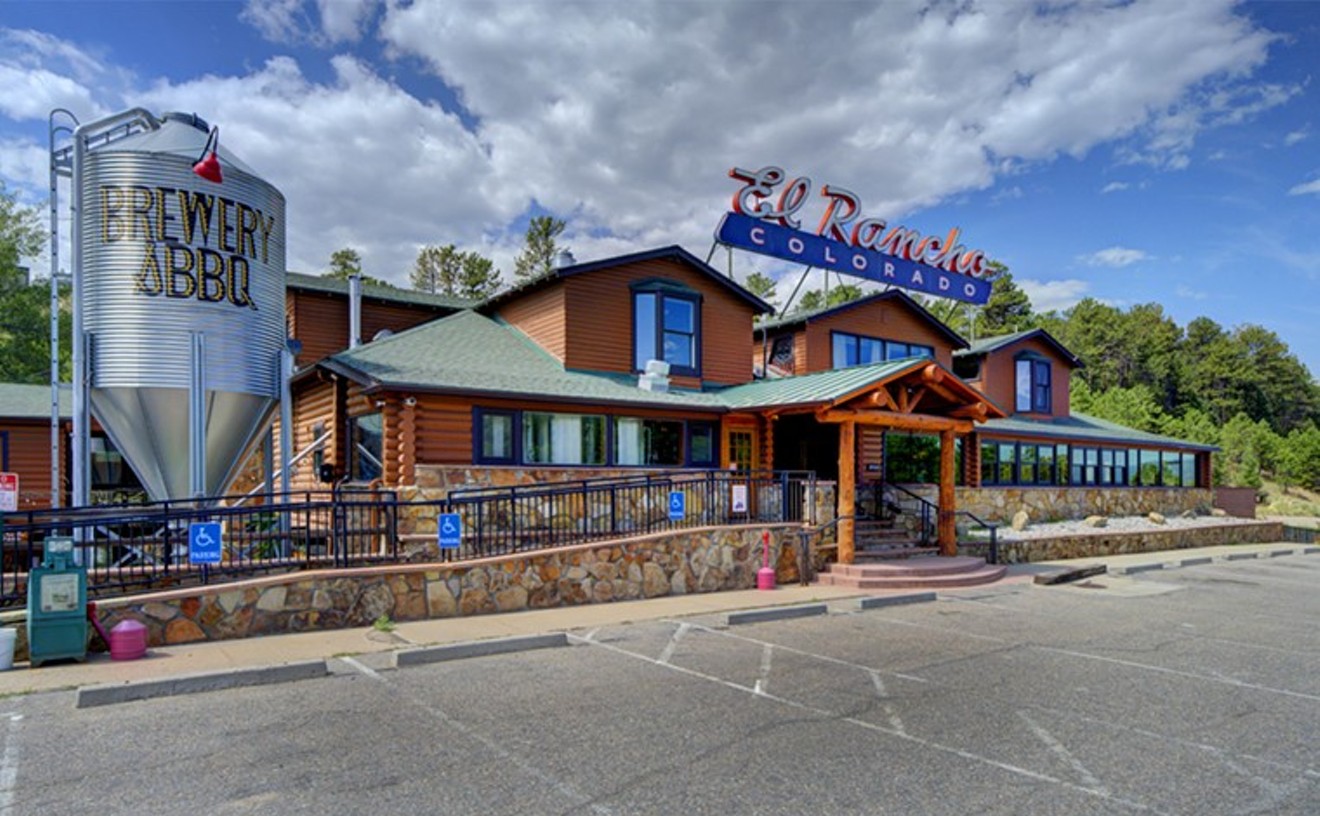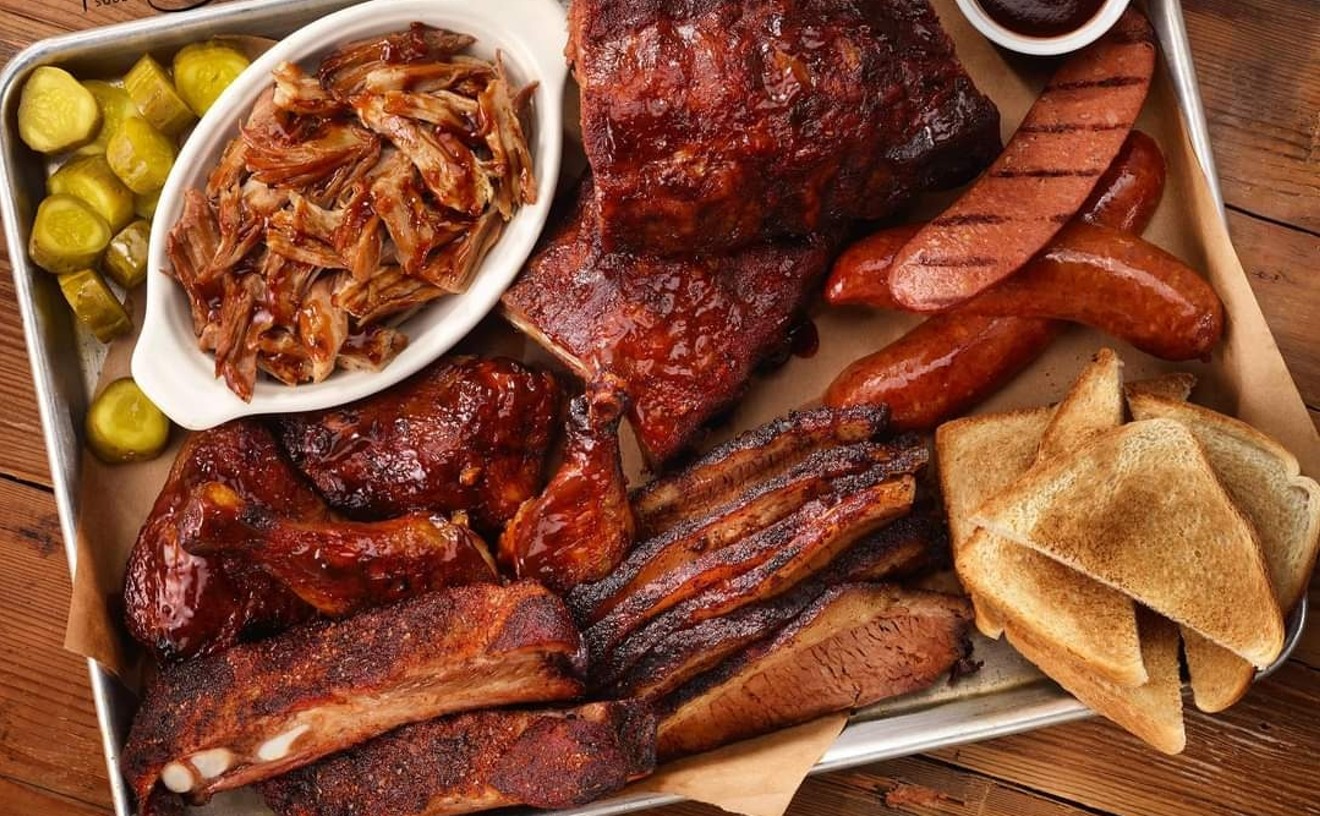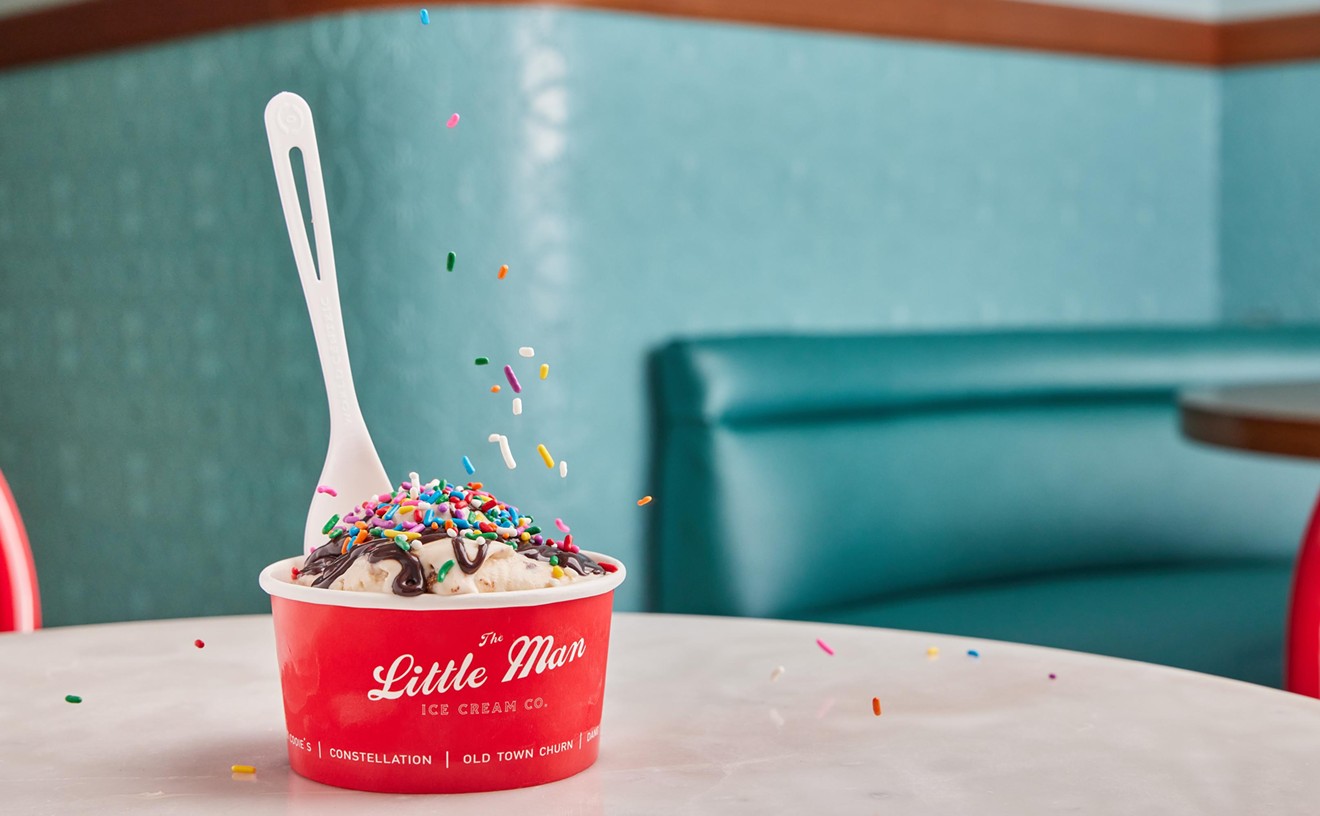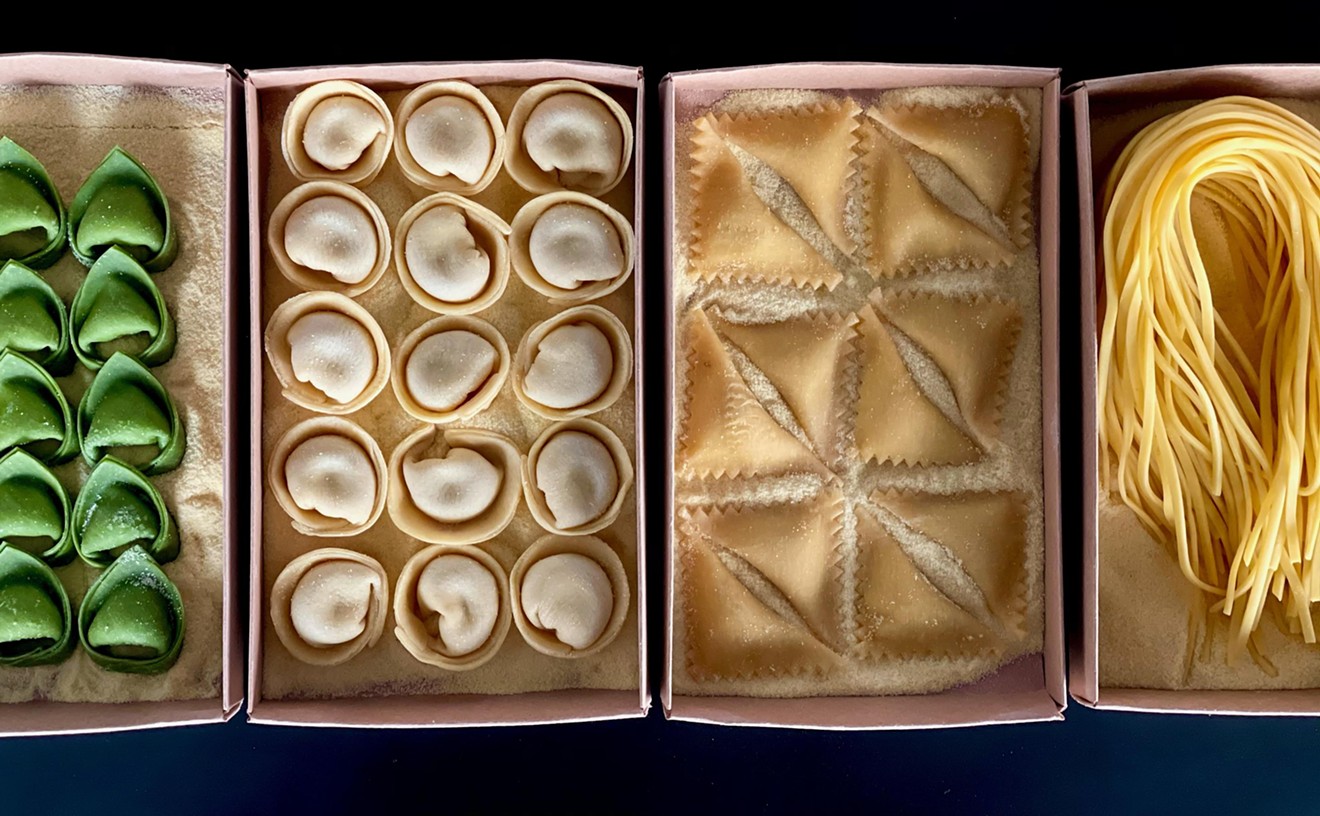For just a moment, I was stunned.
It seemed so simple, so harmless: a lumpy mound of milk-white grits on a white plate. Grits — the ultimate comfort food. So poverty-simple and, like Britney Spears, so trash-gone-superstar. The American polenta, the best thing to happen to high-end food costs since wasabi mashed potatoes. Just about every chef cooks grits these days, and just about every chef cooks them poorly. This is outside of the South, of course, since nearly every chef there cooks them spectacularly well. But around the rest of the country, cooks seem consistently flummoxed by grits. They know all their buddies are cooking them, and they know they ought to cook them. They know that a whole bag of them — even a good bag — costs about a nickel. So they put grits on the menu and then proceed to do everything possible wrong to them. Yellow corn, white corn — doesn't matter. They don't understand the power of grits for absorbing, translating and subtly — oh, so subtly — altering the flavor of anything put close to them. This is the magic of grits — like a simple starch, only better. They cook them too long or too hard or too soft or too quickly. And then they top them with a sauce, the apex of foolishness. Because once cooked and plated, grits become recalcitrant. They refuse to absorb sauce, refuse to even mix well — becoming clotty and stained rather than blended, ugly and foul and (if any food can be) ill-tempered. Grits are tough. They have very specific ideas about their proper employment on the plate and will brook no fucking around.
I had good grits in New York City — shrimp grits at Bobby Flay's Bar Americain when Rebecca Weitzman was still cooking there. I could get good grits at a couple of places in New Mexico and, while employed in my last-ever cooking gig before coming here, got to know grits pretty well myself because I worked the night shift at an Albuquerque Waffle House, and one of my many responsibilities (along with tossing the drunks and cooking the hash browns and cleaning the grease traps) was fixing grits for the morning shift. These were plain grits — yellow corn, very cheap even by grit standards — and we did nothing to them but cook them. But even that was a process, like making perfect risotto. They needed to be rinsed and rinsed again. They needed to go into a hot pot with water; to boil and then be backed down; to be fed little sips of water here and there as they plumped and drank in the liquid and grew soft; to be buttered in the pot (or occasionally creamed, if I was feeling frisky); to be turned over and over again as delicately as a soufflé so that they didn't burn or stick.
I liked cooking grits. I screwed it up constantly, but I never minded starting over. It was something to do in the quiet hours between four and six in the morning — something to focus on. Sometimes my grits were good. Sometimes they were terrible. And since the day cook was a big Southern man with the classic, pear-shaped Southern sheriff body held up on skinny little legs, he knew good from bad and never hesitated to tell me which was which. Grits were the last real lesson I learned in the kitchens, the last bit of knowledge I took with me when I left.
And at Venue, I learned something new about grits. I learned how truly great they can be, how powerful, how dangerous.
The mound of white-corn grits was studded with preserved cherries, surrounded by a slick, golden tarn of maple-pork jus and topped by a giant portion of pork tenderloin, pan-seared, oven-finished, cut into huge whacks of beautiful porky goodness. But I went right for the grits because they looked so innocuous, like chunky clouds: white on white. I took a big forkful and crammed it into my mouth — where it immediately went off like I'd eaten a hand grenade.
Bacon. Concentrated essence of the concentrated essence of pork. These were bacon grits, made by a kitchen that understood implicitly what grits could be made to do if you followed the grits' rules and played to the grits' strength. Infused with bacon fat and bacon flavor and bacon's salty, earthy savor, this was like eating a pound of bacon in a single bite — the entirety of all that fat and all that flavor exploding inside my head with an almost audible boom that, had I not been conditioned to this kind of thing and prepared for it by years of rigorous professional training, might just as well have been my heart blowing up from joy.
Sure, the pork was good, and the expertly prepared maple jus had been added with a deft hand only after everything else was on the plate so as not to disrupt the balance — or sully the perfect whiteness of those amazing grits. The dried cherries were another smart addition, cutting the richness of the bacon and the weight of the white corn with a little zing of tart and sweet.
Venue serves American comfort food. It serves American comfort food prepared with French technique, with a little Italian influence, with a greenmarket sensibility. But that doesn't begin to convey the wonders coming from this kitchen. This is a house that serves Manila clams with crumbled fennel sausage and roasted quarters of tomato in a sweet and rich broth spiked with lime and smoked paprika that starts out wonderful, then is made infinitely better when it's poured over a couple of heels of Denver Bread Company bread, a peasant kick that bulks up the plate and creates a delicious sponge to eat along with the fat-bellied meat of the perfectly prepared clams and sweet tomato. It does slow-slow-slow-cooked beef short rib with oyster mushrooms — the meat so sweet and soft that it seems to melt, and the mushrooms actually lending more of a textural counterpoint than the beef — and homemade tomato soup (a perfectly smooth purée of house-roasted tommies) with fresh thyme and garlic, an unexpected dart of spice that hits you right on the back of the tongue. Agnolotti with brie and white beans and mushrooms and tomatoes and leeks. Gnocchi with chanterelles and pancetta and a poached egg (strange, but it works). Simple chicken, crisp-skinned and gently spiced, beside white sweet potatoes, over bacon-shot greens and a sauce (another jus, straight from the pan) spiked with garlic and thyme and lemon.
When I first walked into Venue, I couldn't believe that this space — with its white walls hung with simple pictures of a whisk, a knife, a plate; its dark furniture and gleaming floor; its small kitchen pass through which all good things enter — was once 8 Rivers. That place was so raucous and colorful, so filled with loud reggae and bold spices. On a good day, you used to be able to smell 8 Rivers from half a block away — jerk spice and garlic scenting the air of the entire neighborhood. But Venue sneaks up on you. You barely know it's there until you're at the door, standing in one of the little squares of buttery light coming from the front windows.
On my second visit, I can't believe Venue was ever anything else. It's busy. I get the last table, by the door, the windows. Seven o'clock and the kitchen is already running out of food. The ham hock and white-bean soup is gone. The pork tenderloin goes 86 while I sit there. There are kids, senior citizens, couples and big groups on the floor. Every table is taken, chairs being rearranged to accommodate odd-sized parties. The dick at the table behind me, out to dinner in bicycle-racer lycra pants and khaki cargo shorts (classy), complains when the soundtrack veers briefly away from mushy soft jazz, claiming that it is interrupting his meal. The hostess smiles and changes the music. I shake my head and try not to picture stabbing him with my fork. Instead, I concentrate on my Colorado striped bass over buttered leek risotto, crowned with a mini-salad of frisée and pickled onions. The fillets are so flawlessly cut and cooked that they flake to pieces at the least touch, falling in meaty shards into the risotto — white flesh on white rice — until the flavors of leek and butter and fish and rice and salt (lots of salt, my only half-complaint) all meld together into mixed sums, always greater than their parts. I peel the skin from my fish and let the meat flake away. I eat with my fork and with my fingers, head bowed, silent. Nothing could ever be as good as that first kick of surprise bacon from the grits, but this comes close — playing with delicacy and soft flavors, the opposite end of the culinary spectrum.
Venue serves American comfort food, but it does so much more than that.
It serves comfort food keyed to a higher level, to a more intellectual and beautiful and sensual kind of comfort — aggressive comfort, not passive; grits, not mashers; fish that doesn't come in sticks.
It serves gorgeous food in a room that is like a gallery space for the art of cuisine, for the simplicity of plate and place.
It serves food that is sometimes stunningly delicious in the most basic and workmanlike ways, making Venue that rare restaurant where art and smarts and substance all come together in ideal harmony: an American restaurant that speaks to nothing but the best in our mutt canon, complicated history and complex hearts.










